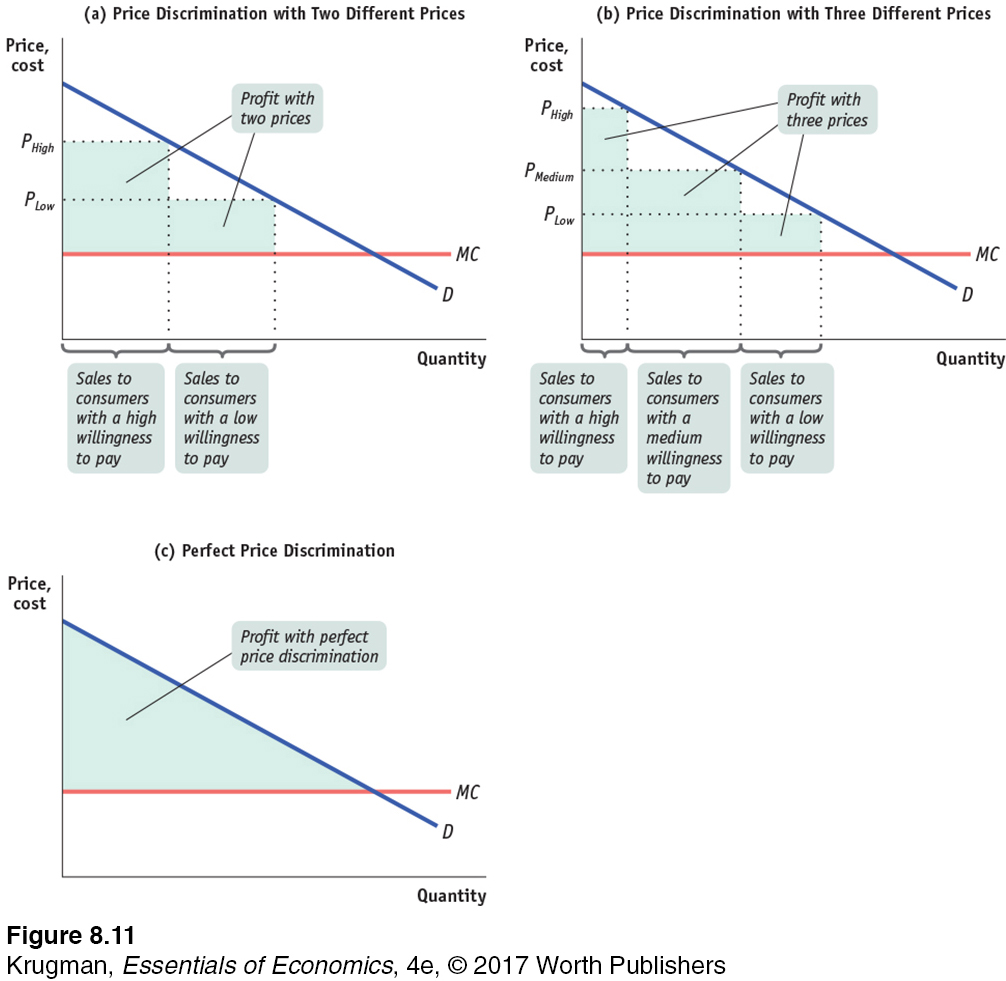FIGURE 8-11 Price Discrimination
 Panel (a) shows a monopolist that charges two different prices; its profit is shown by the shaded area. Panel (b) shows a monopolist that charges three different prices; its profit, too, is shown by the shaded area. It is able to capture more of the consumer surplus and to increase its profit. That is, by increasing the number of different prices charged, the monopolist captures more of the consumer surplus and makes a larger profit. Panel (c) shows the case of perfect price discrimination, where a monopolist charges each consumer his or her willingness to pay; the monopolist’s profit is given by the shaded triangle.
Panel (a) shows a monopolist that charges two different prices; its profit is shown by the shaded area. Panel (b) shows a monopolist that charges three different prices; its profit, too, is shown by the shaded area. It is able to capture more of the consumer surplus and to increase its profit. That is, by increasing the number of different prices charged, the monopolist captures more of the consumer surplus and makes a larger profit. Panel (c) shows the case of perfect price discrimination, where a monopolist charges each consumer his or her willingness to pay; the monopolist’s profit is given by the shaded triangle.

